Search Results for Tag: Maya Sherpa
8000er season in Pakistan is on
The spring season on Nepal’s highest mountains has segued almost seamlessly into the summer season on Pakistan’s eight-thousanders. The first expedition teams have reached the base camps. The South African adventurer Mike Horn arrived on the Diamir side of Nanga Parbat a week ago. In the meantime, the 51-year-old and his teammates have already climbed up to 5,900 meters. Maya Sherpa is tackling the 8125-meter-high mountain too. In May, the 40-year-old Sherpani had had to turn back on Kangchenjunga at about 8,500 metres. Less than 100 meters of altitude difference had been missing to the summit. With the Romanian Alex Gavan and the Turkish Tunc Findik, two other well-known climbers have set off for Nanga Parbat. The 36-year-old Gavan, who failed on Dhaulagiri in spring, has so far scaled six eight-thousanders. For the 46-year-old Findik, Turkey’s most successful high-altitude climber, Nanga Parbat would be his twelfth of the 14 eight-thousanders if successful.
![]() read more
read more
Moniz/Benegaz: Everest summit success after all
All’s well that ends well. Today, 20-year-old American Matt Moniz and his mentor, 49-year-old Argentine Willie Benegas, reached the 8,850-meter summit of Mount Everest. “0459 Summit! We’re on top of the world,” Matt tweeted. On Wednesday, the two climbers also want to scale neighboring Lhotse (8,516 m) , the fourth highest mountain on earth. As reported, the Nepalese Ministry of Tourism had considered revoking Moniz’ and Benegas’ climbing permits. The reason: They had skied down the Lhotse flank during an acclimatization climb – without having a so-called “ski permit”. However, only a few knew about the existence of such a special permit. After about 150 Climbing Sherpas had campaigned for Matt and Willie in an open letter to the Ministry of Tourism for Matt and Willie, the people in charge gave in talking about a “very innocent mistake”. The way for today’s Everest summit attempt was free.
![]() read more
read more
Thomas Lämmle successful on Makalu
Persistence pays off. The German high altitude climber Thomas Lämmle reached, as he wrote on Facebook yesterday, on last Sunday the 8,485 meter high summit of Makalu, the fifth highest mountain on earth. The 52-year-old from the city of Waldburg in Baden-Württemberg climbed without bottled oxygen and Sherpa support. Last year, Thomas had returned empty-handed from Makalu after four summit attempts, all of which had failed due to bad weather. Now, according to his own words, he also wants to tackle Lhotse, the fourth highest mountain in the world, “before the snowfall – means May 21st”. Makalu was Lämmle’s sixth eight-thousander after Cho Oyu (in 2003), Gasherbrum II (in 2005 and 2013), Manaslu (in 2008), Shishapangma (in 2013) and Mount Everest (in 2016).
![]() read more
read more
Maya Sherpa: Next try on Kangchenjunga
Second attempt. This spring, Maya Sherpa, one of Nepal’s most famous and best female climbers, will tackle Kangchenjunga, the third highest mountain in the world. “I am happy to go there again,“ the 40-year-old told me as we met in Kathmandu last week. “I have found sponsors who support me. However, my goal is not only to climb Kangchenjunga, I like to climb more 8,000-meter-peaks as the first Nepali woman.” In May 2017, Maya and her Nepalese friends and teammates Pasang Lhamu Sherpa Akita and Dawa Yangzum Sherpa had had to turn around on the 8,586-meter-high Kangchenjunga, about 300 meters below the highest point. The entire group of summit candidates had run out of ropes. “One of our Climbing Sherpas told us then that they had made the same mistake in spring 2013,” said Maya. “At that time, they went up to the summit. On descent, two Sherpas and three foreign climbers died because there was no rope, they were tired and it was extremely slippery in the upper part of the mountain, especially on the rock.”
![]() read more
read more
Coster: “Too busy in the Khumbu Icefall“
The Everest spring season is on. This Saturday, eight “Icefall Doctors“ will be celebrating a puja in the base camp on the Nepalese south side of the highest mountain in the world, a Buddhist ceremony, during which the gods are asked for their blessing. Next week, the Sherpas, who are specialized in this task, will prepare this year’s route through the Khumbu Icefall. At the beginning of April the first commercial teams are expected in the base camp. “I’m wondering how busy it will be on the south side with every year we see the numbers increasing significantly,“ says Arnold Coster, when I meet him today in Kathmandu. “And I wonder how many actually switch to the Tibetan side.“
![]() read more
read more
That’s not on!
In the next few days there will surely be a lot of success reports on the eight-thousanders. Before we switch to the congratulation mode, unfortunately, we have to bring up some painful objects of commercial climbing. I’m really not a moralizer, but some news from the last few days have raised my concern – especially today’s tweet by Tim Mosedale. “Ronnie & Pemba have arrived at Lhotse high camp to find that some scumbags have nicked the supply of oxygen. Completely unacceptable”, writes the British expedition leader, who summited Mount Everest on Wednesday for the sixth time. And he sent another tweet: “Stealing Os jeopardises lives of other climbers. If it’s an emergency let us know and of course we’ll help. Taking it is utterly disgraceful.” It’s really shocking, absolutely negligent and inexcusable that egoism on the mountain goes so far that even oxygen bottles are stolen. This does not show the attitude of some (hopefully only a few) climbers on the highest mountains on earth in a very favourable light. This also applies to what happened in the failed summit attempt on Kangchenjunga last Tuesday.
Incorrect information in the highest camp
The Australian Chris Jensen Burke reports in her blog, a leader of another group had told them in the last camp below the summit that ropes had been fixed up to 8,100 meters on the previous day. Therefore it would not be necessary to take all ropes available in the camp, he added – and that no Sherpas would have to ascend long before the clients of the commercial expeditions. Half a day later this turned out to be simply wrong. As a result, there was a “conga-line” (Chris) at an altitude of about 8,000 meters: ahead the Sherpas, who still had to secure the route, behind them the summit aspirants of the different teams. Then, in consequence of the incorrect information at the high camp, the ropes ran out. The summit attempt had to be abandoned, all climbers descended.
No trace of appreciation
“Why were we given incorrect information?,” Chris Jensen Burke asks. “I have to believe inexperience played a key part, and there must have been no appreciation by the chap of the consequences.” No trace of teamwork. However, also the comment of a client quoted by Chris make me shake my head: “If a route setter knows climbers are coming up behind them, they should move faster.” These words are short of any respect for the work of the Sherpas. And the question must be allowed: What’s about the self-responsibility of the clients?
Among those who turned back on Kangchenjunga were the three Nepalese Maya Sherpa, Pasang Lhamu Sherpa Akita and Dawa Yangzum Sherpa. Today they decided to leave the mountain because of the rather bad weather forecasts. “It’s clearly a very disappointing decision, and we would obviously wish that we could return with a summit,” the Sherpani trio wrote on Facebook.
With Sherpa women’s power to the top of Kangchenjunga
The trio wants the triple. After having climbed Mount Everest and K 2, Maya Sherpa, Pasang Lhamu Sherpa Akita and Dawa Yangzum Sherpa plan to scale next spring also the third-highest mountain in the world, the 8,586-meter-high Kangchenjunga in the east of Nepal. Via the normal route, with bottled oxygen. They climbed Everest still separately – Maya for the first time in 2006, Pasang Lhamu in 2007 and Dawa Yangzum in 2012 – but K 2 in Pakistan in 2014 for the first time together as a team. As early as in 2015 the trio wanted to climb Kangchenjunga. However, at that time the expedition did not come about for financial reasons. This time, too, there is still money left, Maya Sherpa, who is to lead the first Nepalese women’s expedition to Kangchenjunga, writes to me. The Trekking Agencies’ Association of Nepal (TAAN) has announced to provide financial support as well as Tashi Lakpa Sherpa, managing director of the expedition operator Seven Summit Treks, says Maya Sherpa. The Nepal Mountaineering Association (NMA) has not yet decided whether it will also participate in the costs. In addition, the three Sherpani try to get a free permit for their expedition by the government.
![]() read more
read more
Bravo, Everest Ladies!
Female Power on Mount Everest. There were two women among the handful of climbers who have so far reached the 8850- meter-high summit without bottled oxygen this spring season: Melissa Arnot and Carla Perez. Before them, only six female climbers had succeeded this feat: Lydia Bradey (New Zealand, in 1988), Alison Hargreaves (UK, in 1995), Francys Arsentiev (USA, in 1998, she died on descend), La Ji (China, in 2004), Nives Meroi (Italy, in 2010) and Gerlinde Kaltenbrunner (Austria, in 2010).
![]() read more
read more
Pathetic? No way!
Nepal needs strong women like Maya Sherpa. “With our women expedition project we want to inspire women doing what we really are capable of even after being married and having children”, the 36-year-old climber writes to me. In July 2014, she scaled the 8611-meter-high K 2 with Dawa Yangzum Sherpa and Pasang Lhamu Sherpa Akita. They were the first female climbers from Nepal on top of the second highest mountain in the world. A week and a half ago, I introduced the trio’s new project in my blog: the planned ascent of Kangchenjunga next spring. I got Maya’s answers to my questions concerning their plans a few days after the article had gone online.
![]() read more
read more
(Mountain) Female power from Nepal
They are a powerful trio on the mountain: On 26 July 2014, Dawa Yangzum Sherpa, Maya Sherpa and Pasang Lhamu Sherpa Akita were the first women from Nepal, who reached the 8611-meter-high summit of K2 in Pakistan. The second highest mountain in the world is also called “Savage Mountain” due to the difficulty of ascent and the high fatality rate. “We were the first Nepalese women on K 2! And it was not easy climbing this moutain. Only real climbers know how and why we climbed K 2”, Dawa Yangzum writes to me. Mountaineers had appreciated their performance in an appropriate way. They did not expect that from the Nepalese government anyway: “Mostly, the government, the ministry and all these people just know Everest and the Seven Summits. If we had climbed the Seven Summits, they would have made us a front page news”, says the 25-year-old. The government is in Dawa Yangzum’s bad books anyway.
![]() read more
read more



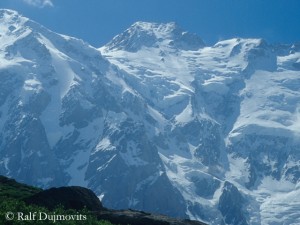

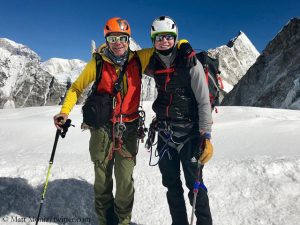
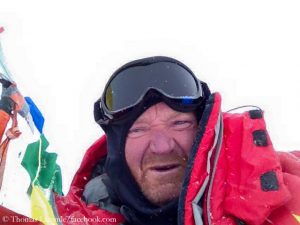


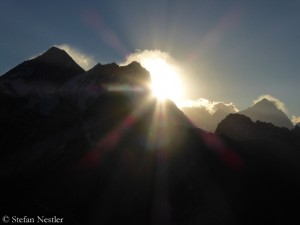
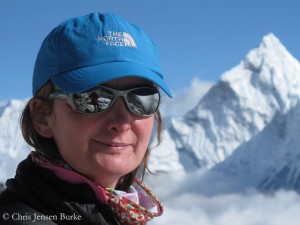
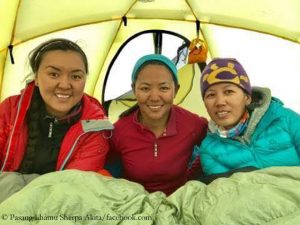

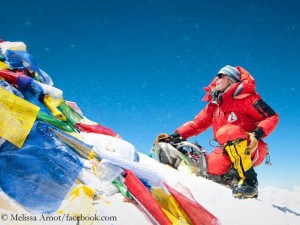
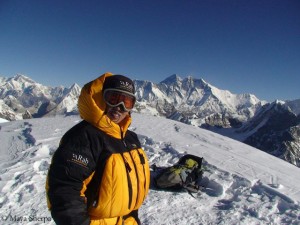
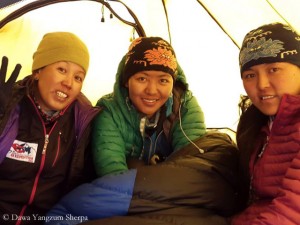

Feedback